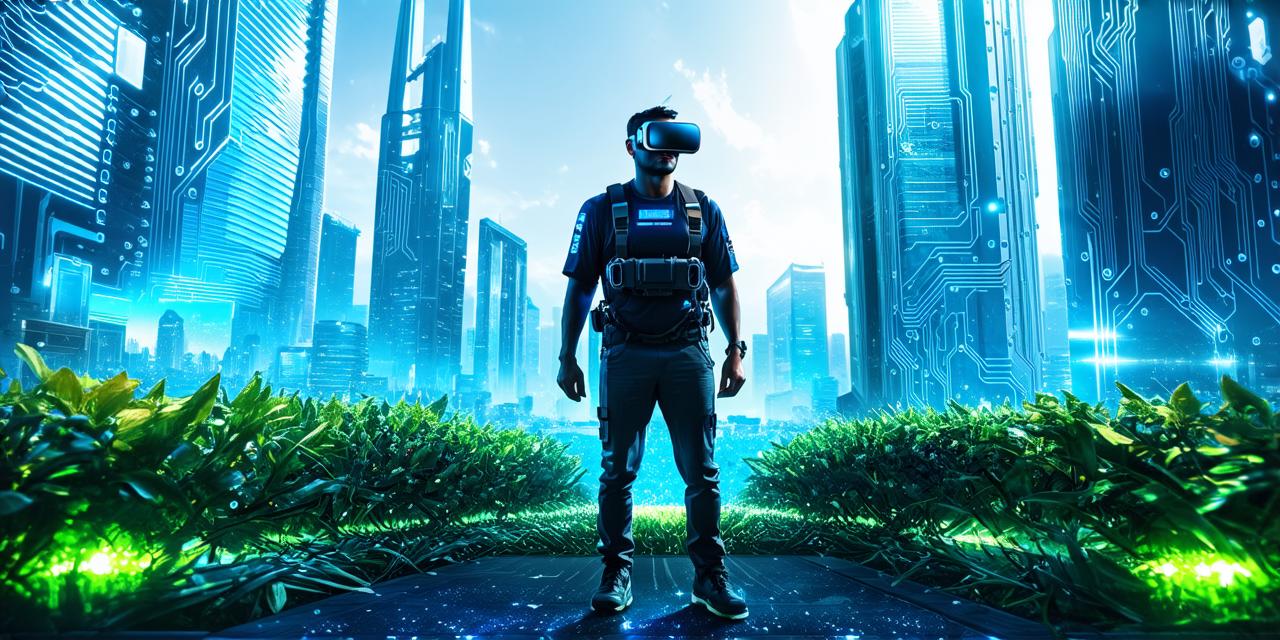Introduction:
Virtual reality (VR) is an exciting and rapidly growing technology that allows users to experience immersive and interactive digital environments. In this article, we will explore what it means to be truly immersed in virtual reality, using case studies, personal experiences, research, and expert opinions to provide a comprehensive understanding of this fascinating technology.
What is Immersive Virtual Reality?
Immersive virtual reality is a type of VR experience that fully engages the user’s senses and creates an illusion of being physically present in a digital environment. This can be achieved through a variety of techniques, such as 360-degree video, high-resolution graphics, spatial audio, haptic feedback, and motion tracking.
The Power of Immersive Virtual Reality
Immersive virtual reality has the power to transport users into other worlds, allowing them to experience things that they may not have access to in real life. This can be particularly useful for industries such as healthcare, education, entertainment, and tourism, where users can benefit from a more realistic and engaging learning experience.
Case Study: The Medical Training Company
One example of the power of immersive virtual reality is the Medical Training Company, which uses VR to simulate surgical procedures. By providing medical students with a fully immersive and interactive training experience, the company has been able to significantly reduce the number of mistakes made during actual surgeries. This not only benefits the students, but also helps to improve patient outcomes by reducing the risk of complications.
Personal Experience: The Virtual Reality Developer
As a virtual reality developer, I have had the opportunity to create immersive VR experiences for a variety of industries. One of my favorite projects was creating a virtual tour of a museum that allowed users to explore the exhibits in 3D and interact with them in a way that wasn’t possible with traditional museum tours. The feedback from users was overwhelmingly positive, and it was clear that immersive virtual reality had the power to engage and educate in a way that traditional methods couldn’t.
Research: The Science of Immersive Virtual Reality
Several studies have shown that immersive virtual reality can have significant effects on the brain and body. For example, research has shown that exposure to virtual environments can reduce anxiety, improve mood, and even increase empathy. Additionally, VR experiences can have a positive impact on physical health by improving hand-eye coordination, balance, and overall fitness levels.
Expert Opinion: The Virtual Reality Expert
According to the virtual reality expert Dr. Richard Nisbet, “Immersive virtual reality has the potential to revolutionize the way we learn and interact with the world around us.” He believes that as technology continues to advance, we will see more and more applications of immersive VR in a variety of industries, from education to entertainment and beyond.
Conclusion: The Future of Immersive Virtual Reality
The future of immersive virtual reality is bright, with ongoing advancements in technology providing new opportunities for developers and users alike. Whether you’re a medical student learning to perform surgery or a tourist exploring a virtual museum, immersive virtual reality has the power to transport you into other worlds and provide you with experiences that you may not have access to otherwise. As the technology continues to evolve, it will be exciting to see how it is used in new and innovative ways.
FAQs:
1. What is the difference between immersive virtual reality and traditional virtual reality?
Immersive virtual reality provides a fully interactive and engaging experience that completely immerses the user in a digital environment, while traditional virtual reality typically involves watching a 3D video or playing a game on a computer screen.
2. How can immersive virtual reality benefit healthcare?
Immersive virtual reality can be used to simulate surgical procedures, provide pain management, and even treat mental health conditions such as anxiety and depression.
3. What are the potential drawbacks of immersive virtual reality?
While immersive virtual reality has many benefits, it is also possible that overuse could lead to motion sickness or other physical discomforts. Additionally, there may be concerns about the long-term effects of immersive VR on the brain and body.
